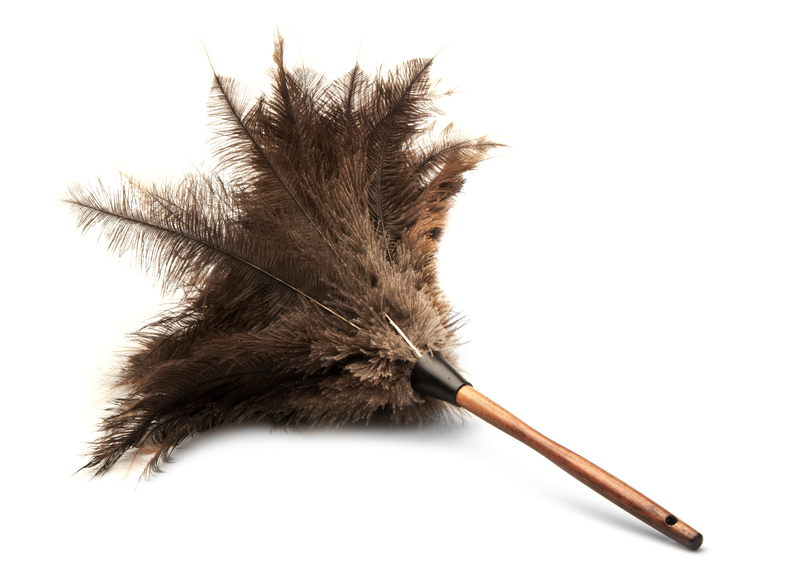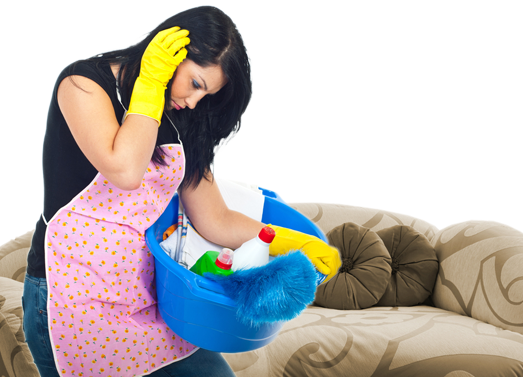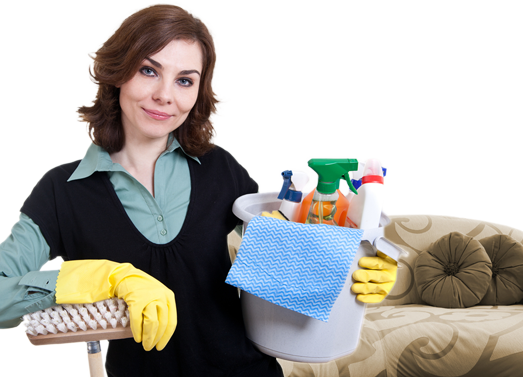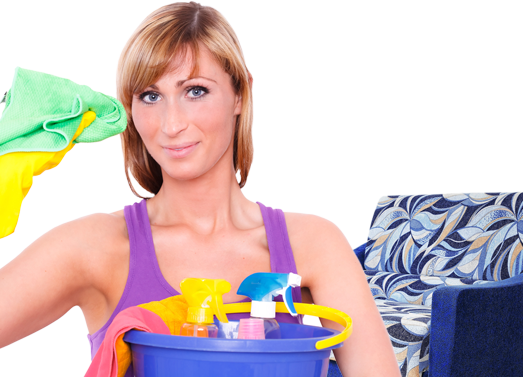Smart Tips for a Mold-Free and Hygienic Bathroom
Posted on 27/06/2025
Smart Tips for a Mold-Free and Hygienic Bathroom
Maintaining a mold-free and hygienic bathroom is essential for the health and well-being of your household. Bathrooms, due to their warm and humid environment, are breeding grounds for mold, mildew, and unwanted bacteria if not cleaned or ventilated properly. This comprehensive guide reveals smart, actionable tips that not only help you prevent bathroom mold growth but also ensure a sparkling clean and healthy environment. Read on to discover the most effective strategies for a hygienic, fresh, and inviting bathroom space.

Understanding Mold and Its Dangers in Bathrooms
Mold is a type of fungus that thrives in moist, dim, and poorly ventilated areas. The bathroom, with its frequent exposure to water and humidity, offers mold the perfect breeding conditions. Unsightly black or green spots can quickly appear on tiles, grout, ceilings, or shower curtains, and if ignored, they can cause more than just cosmetic damage. Mold in bathrooms can release spores into the air, triggering allergies, asthma, and other respiratory issues, especially in sensitive individuals.
Health Risks Associated with Bathroom Mold
- Respiratory problems: Mold spores can cause sneezing, coughing, and asthma attacks.
- Skin irritations: Direct contact with moldy surfaces may lead to rashes or other skin problems.
- Aggravation of allergies: Individuals with allergies may experience heightened symptoms.
- Chronic fatigue and headaches: Long-term exposure to bathroom mold can contribute to ongoing health issues.
Smart Tips for a Mold-Free and Hygienic Bathroom
Follow these proven methods to keep your bathroom hygienic and free from mold growth:
1. Ensure Optimal Ventilation
- Install an Exhaust Fan: One of the most effective ways to prevent bathroom mold is adequate ventilation. An exhaust fan efficiently removes steam and excess moisture after showers or baths.
- Open Windows: If available, open windows after using the bathroom to promote air circulation and decrease humidity levels.
- Keep Doors Ajar: Allow air to flow in and out by leaving doors slightly open after use, especially after hot showers.
Tip: Run your exhaust fan for at least 15-20 minutes after bathing to thoroughly dry out the bathroom.
2. Eliminate Excess Moisture Promptly
- Wipe Surfaces: Use a squeegee or microfiber cloth to dry shower walls, mirrors, tiles, and bathtubs after each use.
- Fix Leaks Immediately: Repair any leaky faucets, showerheads, pipes, or toilets as soon as possible. Even small drips can contribute to high humidity and mold growth.
- Remove Wet Towels & Bath Mats: Hang towels up to dry outside the bathroom or use towel warmers, and remember to wash bath mats frequently.
Keeping surfaces dry is crucial for maintaining a mold-free bathroom environment.
3. Regular and Deep Cleaning Practices
- Clean Weekly: Set a schedule to thoroughly clean your bathroom at least once a week. Pay special attention to sinks, toilets, showers, bathtubs, and floors.
- Use Mold-Preventative Cleaners: Choose cleaning agents that are specifically designed to fight mold and mildew. Vinegar, hydrogen peroxide, and baking soda are natural alternatives.
- Scrub Grout and Tiles: Scrub grout lines using a brush and anti-mold solution to prevent mold buildup in these commonly affected areas.
Pro Tip: Replace old shower curtains or liners with mold-resistant varieties for added prevention.
4. Reduce Bathroom Humidity
- Maintain Low Humidity: Try to keep your bathroom's humidity level below 50%. Use a dehumidifier if necessary.
- Monitor Temperature: Cooler bathrooms create less condensation. Adjust your water temperature, or use slightly cooler showers.
Investing in a hygrometer lets you track humidity and catch increases before they become a problem.
5. Improve Storage and Organize Clutter
- Organize Toiletries: Keep shampoo, conditioner, and soaps neatly stored and not left open or wet.
- Use Open Shelving: Promote airflow by using open or wire shelving instead of closed cabinets, preventing trapped moisture around products.
- Declutter: Store unused items elsewhere to reduce surfaces for mold to grow on and to make cleaning easier.
Less clutter leads to easier maintenance and improved bathroom hygiene.
6. Seal and Maintain Grout Lines
- Apply Grout Sealer: Protect tile grout by applying a sealant every 6-12 months to create a waterproof barrier.
- Repair Cracks: Regularly inspect and fix any cracks or breaks in tiles and grout to eliminate entry points for moisture.
Maintaining tile and grout integrity is crucial for bathroom cleanliness and preventing moldy bathrooms.
7. Upgrade Bathroom Fixtures and Materials
- Use Mold-Resistant Paint: When renovating, opt for paints formulated to resist mold and mildew.
- Install Mold-Resistant Drywall: Also known as green board, this material holds up better in humid environments.
- Choose Non-Porous Tiles: Non-porous surfaces resist absorbing water and are easier to keep clean.
Modern materials make it simpler than ever to maintain a resilient, hygienic bathroom.
Additional Proactive Measures for Bathroom Hygiene
Upgrade Bathroom Ventilation System
- Invest in Smart Exhaust Fans: Consider a fan with a humidity sensor that turns itself on automatically when moisture levels rise.
- Regular Fan Cleaning: Dust and deodorize your exhaust fan at least twice a year to ensure peak functionality.
Add Greenery for Natural Air Purification
- Use Humidity-Loving Plants: Boston fern, peace lily, and bamboo thrive in bathroom conditions and help absorb excess moisture.
- Plants also act as natural air purifiers, further improving bathroom hygiene.
Adopt Daily Hygiene Practices
- Close Toilet Lid Before Flushing: This prevents bacteria and germs from becoming airborne, keeping other surfaces more hygienic.
- Sanitize High-Touch Areas: Clean faucets, light switches, and door handles frequently with disinfectant.
- Launder Shower Curtains and Mats Weekly: Wash or replace at least once a week to prevent mold and mildew buildup.
Recognizing Early Signs of Bathroom Mold
Identifying issues before they escalate is key to keeping bathrooms mold free:
- Musty Odors: An earthy, unpleasant smell often signals hidden mold.
- Discolored Grout or Caulking: Spots or streaks of black, green, or orange indicate mold presence.
- Peeling Paint or Wallpaper: Moisture can cause paint or wallpaper to bubble and peel, creating a haven for mold.
If you notice any of these signs, take immediate action to deep clean, disinfect, and address the root cause of excess moisture.
How to Remove Mold from Your Bathroom
If you do find mold, act quickly to regain a healthy bathroom environment. Here's how:
- Wear Protective Gear: Put on gloves and a mask to avoid exposure to spores.
- Use an Effective Cleaner: Spray affected areas with a solution of one part bleach to nine parts water, or use undiluted white vinegar for non-porous surfaces.
- Scrub Thoroughly: Use a brush to scrub grout, tiles, and corners until mold is gone.
- Rinse and Dry: Rinse surfaces with clean water and ensure complete dryness.
- Dispose of Non-Washable Items: Throw away moldy shower curtains or heavily infested items that can't be salvaged.
Never mix bleach with ammonia or other cleaners, as this produces hazardous fumes.

Frequently Asked Questions About Mold-Free Bathrooms
Can I Use Natural Remedies to Prevent Mold?
Yes! Vinegar, baking soda, and hydrogen peroxide are effective, eco-friendly cleaners that help keep mold at bay without harsh chemicals.
How Often Should I Clean My Bathroom?
For optimal bathroom hygiene, aim for a thorough cleaning at least once a week. High-traffic bathrooms may require additional spot cleaning in between.
What's the Best Way to Dry Out a Bathroom After a Shower?
Run an exhaust fan, open windows, and wipe down wet surfaces after use. This simple practice drastically reduces moisture and hinders mold growth.
Conclusion: Your Blueprint for a Mold-Free and Hygienic Bathroom
Creating a mold-free, hygienic bathroom requires a proactive approach, regular maintenance, and making smart upgrades where possible. By incorporating these smart tips and bathroom hygiene habits into your routine, you reduce the risk of mold growth, protect your family's health, and enjoy a cleaner, fresher bathroom every day.
- Keep moisture in check with proper ventilation and drying techniques.
- Regularly deep clean and disinfect all surfaces.
- Repair leaks and cracks promptly for a robust defense.
- Opt for mold-resistant paints, materials, and fixtures when renovating.
- Stay vigilant for early signs of mold, acting fast to address any issues.
Remember: A little daily effort goes a long way in ensuring your bathroom remains a friendly, sanitary, and mold-free space that enhances your home's comfort and your family's wellness.
Do you have more questions or personal tips about keeping bathrooms clean and mold-free? Share your experiences below!





